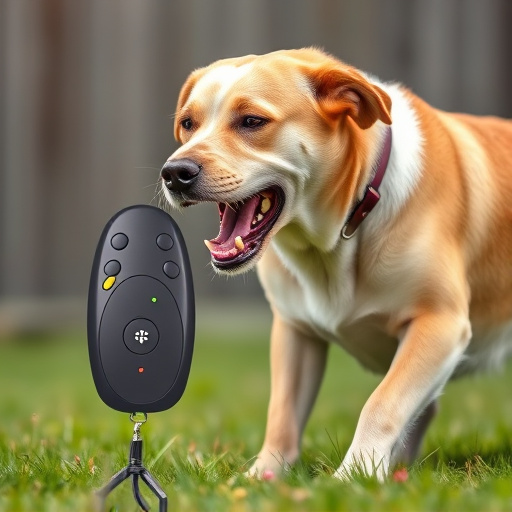Dog aggression stems from instinct and environment, which can be managed through understanding triggers like territoriality or fear. A peaceful, assertive approach sets boundaries effectively, deterring aggression without intimidation. This strategy includes knowing when to stand firm, retreat, or seek help, maintaining "safe power levels." Non-violent deterrents like whistles, sprinklers, pepper spray, and strategic body language ensure dominance and prevent attacks while keeping you safe, practicing in controlled environments for optimal results.
Personal protection against aggressive dogs is a vital concern for anyone sharing spaces with these unpredictable animals. This article guides you through understanding canine aggression, recognizing triggers, and employing non-violent deterrents to maintain safe power levels. Learn effective personal safety strategies to protect yourself from unexpected encounters, ensuring your peace of mind in environments where dogs roam free. Discover practical tools and techniques to create a secure environment without resorting to harmful methods.
- Understanding Aggressive Dogs: Behavior and Triggers
- Non-Violent Dog Deterrents: Tools and Techniques for Safe Power Levels
- Personal Safety Strategies: Protecting Yourself from Unpredictable Canines
Understanding Aggressive Dogs: Behavior and Triggers
Many dog behaviors, including aggression, stem from instinctual responses and environmental triggers. Understanding these is key to personal protection. Aggressive dogs often operate at a different set of safe power levels; what seems like play to an untrained eye might be a sign of impending aggression. Triggers can vary widely, from territoriality to fear, pain, or even excitement. Knowing these triggers helps in anticipating and diffusing potential danger.
A good dog deterrent is not about intimidation but about setting clear boundaries and communicating effectively. Maintaining a calm, assertive presence can deter aggressive dogs by demonstrating confidence and resolve without escalating the situation. Safe power levels involve understanding when to stand your ground, when to retreat, and when to seek help, ensuring personal safety while avoiding unnecessary conflict.
Non-Violent Dog Deterrents: Tools and Techniques for Safe Power Levels
Non-violent dog deterrents offer a range of tools and techniques to protect yourself from aggressive dogs while maintaining safe power levels. These methods focus on using sound, scent, and visual cues to scare or disorient the dog without causing harm. For instance, high-pitched whistles, motion-activated sprinklers, and pepper spray can be effective in deterring dogs without resorting to violence.
Additionally, wearing reflective clothing, carrying a stick or umbrella, and making loud noises can help establish dominance and deter an attacking dog. It’s crucial to choose deterrents that are humane and legally acceptable, as using excessive force against a dog can lead to legal repercussions and further aggression. Always practice these techniques in safe environments to ensure they work effectively when needed.
Personal Safety Strategies: Protecting Yourself from Unpredictable Canines
When faced with an unpredictable or aggressive dog, maintaining your safety is paramount. One effective strategy is to adopt a calm yet assertive posture. Stand tall, make yourself appear larger, and avoid direct eye contact, as dogs can perceive it as a challenge. Speak firmly but not aggressively, using a deep voice, which can help establish your authority without triggering their protective instincts.
Another crucial aspect of personal safety against dog deterrents is being mindful of your body language. Keep your hands clear and away from your face, as dogs may mistake them for food or a threat. Maintain a safe power level by remaining calm, avoiding sudden movements, and providing the dog with an escape route if possible. If the dog continues to display aggressive behavior, use noise—like clapping or shouting—to startle it, then move away slowly and securely.
In understanding aggressive dogs, their behaviors, and triggers, it becomes clear that a multi-faceted approach is key to personal protection. Utilizing non-violent dog deterrents at safe power levels offers an effective strategy while maintaining safety. By combining these methods with personal safety strategies, individuals can confidently navigate encounters with unpredictable canines, empowering them to protect themselves effectively.
